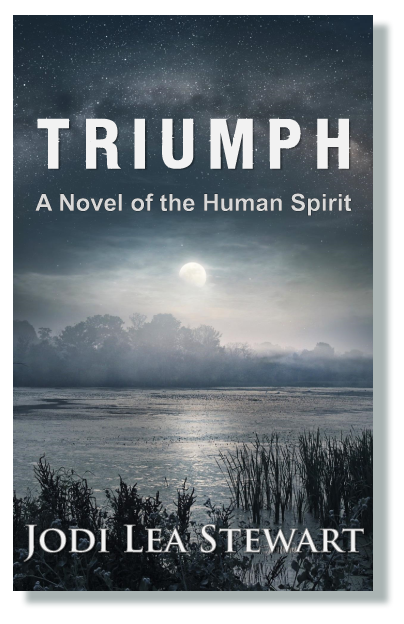My childhood as the only girl on an Arizona ranch could get downright lonesome.
Television and radio reception were nonexistent, and all the wonderful gadgets of today weren’t yet invented.
Friends were far away, so play dates and overnighters were as scarce as green grass, which is plenty scarce in the high deserts of the Southwest.
One day, probably as a result of my mournful expressions and heavy sighs, my mother – shrouded in mystery – beckoned me to follow her to the garden. There, between a peach tree and the rock house that supported our water tank filled with well water, she poured several tear-shaped seeds about the size of corn kernels into her hand from a packet.
What were they?
Job’s Tears, she said, and I was immediately beguiled.
What a name! I could barely breathe as I asked her what we were going to do with them.
Plant them, was her reply.
And we did.
What exactly are Job’s Tears?
 For starters, Job’s tears are nature’s jewelry.
For starters, Job’s tears are nature’s jewelry.
The plants grow a pre-drilled, polished bead that can be used to make an endless assortment of necklaces, bracelets, and other baubles. The male flower grows up through the center of the bead. When removed, it leaves a hollow core just right for stringing.
People have grown Job’s Tears for thousands of years. In western India, a bead-making shop circa 2000 B.C. was uncovered. They found beads made from soapstone *man-made beads* and Job’s Tears *nature’s beads.*
Different cultures have used the beads in creative ways. In Africa, shaker gourds enclosed with a loose net and covered with hundreds of Job’s tears are said to produce a lovely musical sound. Here’s what Wayne’s Word said about it: As the beads slap against the gourd, a loud shaker sound is produced – as good as any modern instrument for this purpose. Using the neck of the gourd as a handle, the sound of the bead net is amplified by the hollow gourd.
Why are they called ‘Tears?’
The tear-shaped beads sometimes refer to Job of the Old Testament, a man who endured great suffering. They are also called David’s Tears, Saint Mary’s Tears, Christ’s Tears and Tear Drops.
- Coix lacryma-jobi – Job’s Tears’ scientific name – is a close relative to corn. The plants strongly resemble corn but are skinnier. It is considered one of the earliest domesticated plants.
- The beads have been used all over the world as a source of food and medicine.
- They can be ground into meal, or used as a coffee substitute.
- They are common in products sold in Asia. When supplies of rice were low during the Vietnam War, Job’s Tears became a staple substitute.
- In Japan, Korea, China, Taiwan and Vietnam, Job’s Tears are available as flakes or powder. They are often added to other grains, liquors, candy, bath products, vinegar, and tea.
- Hatomugi, the Japanese word for Job’s Tears, is used in traditional Japanese Kampo herbal medicine. The grain is valued as a nutritious food and has long been used in traditional Chinese medicine to support hair, skin, nails, and as a digestive aide.
- Here’s what Amazon says about them: This plant’s seeds are used in soups and broths, and can be used in any way that rice is used. They can also be ground into flour which is used to make bread. The seeds are popular for making decorations and have herbal and medicinal uses.

Growing Job’s Tears
 Job’s Tears are easy to grow. The plants don’t need a lot of water and are quite hardy. Here’s a link telling you exactly how to do it, but I promise, it’s easy!
Job’s Tears are easy to grow. The plants don’t need a lot of water and are quite hardy. Here’s a link telling you exactly how to do it, but I promise, it’s easy!
Growing Job’s Tears and stringing the beads into necklaces remains one of my fondest childhood memories. My mother learned about Job’s Tears from her mother. Why not make some passed down memories for your special girls and guys?
They’ll never forget it. Amazon has the seeds for sale right now. And don’t forget to come back and tell us about it, okay?
I always love to hear from you.

Jodi Lea Stewart is the author of a contemporary trilogy set in the Navajo Nation and two historical adventure-mysteries. More are on the way!
Trouble sneaks in one Oklahoma afternoon in 1934 like an oily twister. A beloved neighbor is murdered, and a single piece of evidence sends the sheriff to arrest a black man Biddy, a sharecropper’s daughter, knows is innocent. Hauntingly terrifying sounds seeping from the woods lead Biddy into even deeper mysteries and despair and finally into the shocking truths of that fateful summer.
“Beyond the humor and entertaining antics of the main character, Biddy Woodson, BLACKBERRY ROAD has depth and meaning as it explores stirring universal themes that we expect in great literature” ~ D.B. Jackson, acclaimed Historical and Western author
BLACKBERRY ROAD is engaging, entertaining, and a book that is sure to linger with you . . . the trip is well worth the time ~ Cyrus Webb, Host of ConversationsLIVE, president of Conversations Radio Network, tv show host, author, and publicist
AN ADVENTURE-MYSTERY TRILOGY YOU DON’T WANT TO MISS! SILKI, THE GIRL OF MANY SCARVES trilogy has no age limits.

COMING IN SEPTEMBER:
THE ACCIDENTAL ROAD
A teen and her mother escaping an abusive husband tumble into the epicenter of crime peddlers invading Arizona and Nevada in the 1950s. Stranded hundreds of miles from their planned destination of Las Vegas, they land in a dusty town full of ghosts and tales, treachery and corruption. Avoiding disaster is tricky, especially as it leads Kat into a fevered quest for things as simple as home and trust. Danger lurks everywhere, leading her to wonder if she and her mother really did take The Accidental Road of life, or if it’s the exact right road to all they ever hoped for.
Jodi Lea Stewart was born in Texas to an “Okie” mom and a Texan dad. Her younger years were spent in Texas and Oklahoma; hence, she knows all  about biscuits and gravy, blackberry picking, chiggers, and snipe hunting. At the age of eight, she moved to a large cattle ranch in the White Mountains of Arizona. Later, she left her studies at the University of Arizona in Tucson to move to San Francisco, where she learned about peace, love, and exactly what she DIDN’T want to do with her life. Since then, Jodi graduated summa cum laude with a BS in Business Management, raised three children, worked as an electro-mechanical drafter, penned humor columns for a college periodical, wrote regional Western articles, and served as managing editor of a Fortune 500 corporate newsletter. She currently resides in Arizona with her husband, her delightful 90+year-old mother, a crazy Standard poodle named Jazz, a rescue cat, and numerous gigantic, bossy houseplants.
about biscuits and gravy, blackberry picking, chiggers, and snipe hunting. At the age of eight, she moved to a large cattle ranch in the White Mountains of Arizona. Later, she left her studies at the University of Arizona in Tucson to move to San Francisco, where she learned about peace, love, and exactly what she DIDN’T want to do with her life. Since then, Jodi graduated summa cum laude with a BS in Business Management, raised three children, worked as an electro-mechanical drafter, penned humor columns for a college periodical, wrote regional Western articles, and served as managing editor of a Fortune 500 corporate newsletter. She currently resides in Arizona with her husband, her delightful 90+year-old mother, a crazy Standard poodle named Jazz, a rescue cat, and numerous gigantic, bossy houseplants.
Just for fun . . .

If I had learned to grow my own jewelry, I would be Pharaoh’s favorite son.


















Wow, Jodi! I never heard of this plant or its natural beads before. How amazing! Thank you for sharing your touching story and the secret of such a spectacular plant.
It has been in my heart for quite some time to share my experience with the Job’s Tears beads because I felt there might be a lot of people who didn’t know about them. Your comment confirmed that, and I’m so happy you enjoyed learning about this incredible plant. Thanks for stopping by, Elizabeth!
I was just showing my Job’s Tears plants to a Friend today and telling her about making jewerly with seeds. She had never heard of them.
You’re kidding! What a coincidence, Robin!
I have a plant outside that has small, black, round seed like things. I got it years ago at a Rendezvous and was told it was Indian Tears or something. I know they were used for beads also. I wonder if it’s related to Job’s Tears? Love ya Jodi!!
It sure sounds like it, Dee! Can you share a photo of it with us on Facebook? Does it have the kind of “weedy” centers like the Job’s Tears beads? Wouldn’t it be cool if those black seeds were hollow? They sound beautiful!
If it stops raining long enough, I can take a pic, the black berries (for the lack of anything else to call them) come out in the fall. It’s a small compact bush-like plant. I have never picked the seeds, so I have no idea what they are.
Can’t wait to see them!
That is SO cool! I also have never heard of Job’s Tears and now I want to plant one. I wonder how it would do in the cool, temperate climate of the Pacific NW…
I’m not sure, Tami, since they are originally a tropical plant. However, they are easy to grow and would probably do just fine with sunshine and minimal water in your climate. It’s worth a try ~ they’re just so much fun. Here’s a link for you, and she seems to be an expert on this subject. Bet she would know the answer! http://jennyhoople.com/jobs-tear-jewelry/jobs-tears-seeds-for-beading-or-for-growing